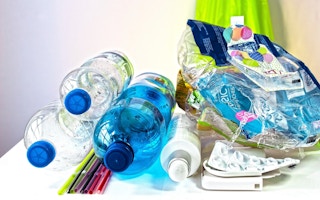‘Circular economy’ has become the buzzword for businesses around the world, regardless of industry. Oftentimes, the phrase is merely used for marketing purposes, with little attention paid to its concepts and principles.
There are numerous players involved in the lifecycle of one product. From raw materials suppliers and logistics companies, to manufacturers, distributors, consumers, and disposal, it may not be sufficient when only one of the players upstream creates a ‘circular product’ without involving the other players downstream to ensure that the loop can truly be closed.
Over the centuries, the human-environment relationship has grown from a circular one to a linear one. In the past, what our ancestors used to take from nature was returned to nature at the end of its life.
“
No material is as difficult to differentiate as plastic.
From a material scientist’s perspective, civilisation developed along with newly synthesised materials that allowed technology to flourish—materials that nature is unable to assimilate in a short period of time. Nevertheless, learning to be better stewards of materials can drive our economy back to a circular one.
For the packaging industry, the answer may lie in mono-materials.
Packaging serves a necessary function—protecting or preserving the product it contains. The material chosen for the packaging has to satisfy this basic functionality. But as products get increasingly sophisticated, more functionalities of packaging are needed and a single material may not be able to satisfy all of the requirements.
Laminations, coatings and additives went into the material formulation to achieve the packaging solution. The need for labels to print the necessary product information and branding further complicated the design. This is how a simple packaging purely used to contain a product can become a concoction of differing materials.
Recycling cannot deal with mixed materials, even for plastics.
No material is as difficult to differentiate as plastic. A transparent plastic can be polyethylene terephthalate (PET), polyvinyl chloride (PVC) or even general-purpose polystyrene (PS).
But these plastics cannot be mechanically recycled together and have to be separated, if not the quality of the recycled PET (which has a higher recycled value) will be downgraded or even contaminated beyond reusability.
The process of mining iron comes from extracting iron ores since iron does not exist as a pure element on earth. This requires energy input to purify the ores to obtain pure iron before it can be further used in the manufacturing of products.
The reverse engineering of products (such as recycling) into individual materials follows the same process. Recycling could be an energy-intensive activity, but it helps to close the loop for a circular economy in packaging products.
However, the more complicated a packaging design, the more effort is needed.
Unfortunately, this segregation often comes from human intervention in developing countries before the actual recycling can take place. If packaging consists of only one material, these preliminary steps can be avoided. The pathway to recycling will also be shorter and more efficient.
For the multi-layered materials that cannot be separated, either simply because it is not economically viable or not intervenable manually, the easiest method would be to take the inseparable materials and downcycle them into a composite particle board.
The only way to know if this mixture of inseparable materials is durable or even toxic is through testing it, but the composite particle board is thereafter rendered non-recyclable.
Is it possible to standardise the transparent plastic type to use for takeaways?
When it comes to determining which plastics to use for packaging, retailers are simply spoiled for choice. But when it comes to service packaging (e.g. takeaway containers), do we really need to look beyond PET and PP?
In the resin code, 7 refers to ‘others’, yet this one number encompasses many different types of plastics, and even biodegradable plastics are currently listed under ‘7’.
To determine if the plastic is recyclable or not, a consumer must know what the resin code represents, and which types of plastic can be collected—which is dependent on the local recycling infrastructure. Such in-depth knowledge may fly over the face of most consumers.
Thus, standardising which mono-material to use for a certain type of packaging—especially those with low functionality such as single-use packaging—may be the key to ensure a truly circular economy.
Plastics have great flexibility when it comes to engineering the material into the required packaging properties. Yet it is the same flexibility that results in the proliferation of plastic types that goes beyond the 7 resin identification codes.
While certain industries like automobiles or electronics would benefit from advanced plastics, comparatively, packaging for everyday items does not require the same level of complexity.
With a thorough understanding of the recycling process and infrastructure, much can be done by the packaging design engineers to mindfully create packaging for ease of recycling.
And mono-material can be a great place to start.
Yvonne Lin is Materials Expert at WWF-Singapore.
Are you interested to know more about the environmental footprint of different materials? Then try WWF-Singapore’s Alternative Materials Tool.











